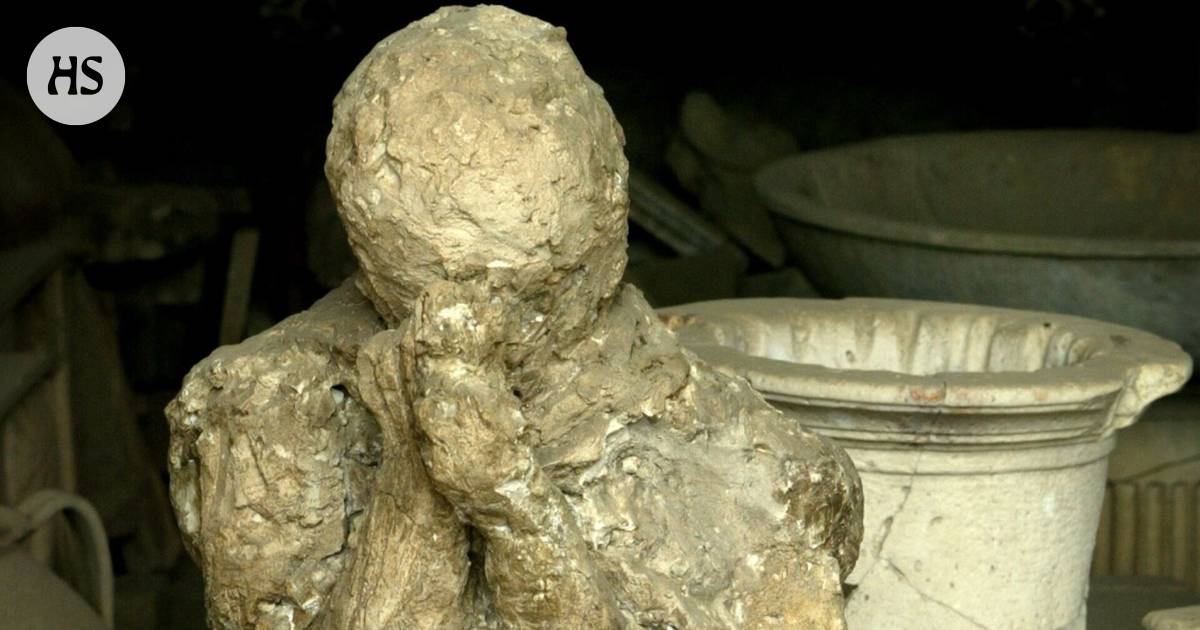History|The investigation revealed that the genders of the victims of the plaster lights had been misinterpreted in the past.
The summary is made by artificial intelligence and checked by a human.
Pompeii’s plaster casts of the victims of the eruption of Vesuvius are already familiar from school books. There are more than a hundred lights.
The researchers found DNA in the five lights, which revealed completely new information about the dead.
The DNAs proved that many assumptions about the victims’ kinship and even gender were wrong.
The population of Pompeii was much more multicultural than previously thought.
Pompejin new information has been obtained about famous human figures cast in plaster, which calls into question the previous information and stories told about the figures.
A recent DNA analysis, for example, reveals that the sexes of those chained in plaster have been wrongly assessed. The demographic structure of the city of Pompeii was also much more multicultural than previously believed.
Monet Roman cities were buried under ash and pumice when the volcano Vesuvius erupted in 79.
Pompeii was one of these cities. About 2,000 of its 20,000 inhabitants suffocated and died from the volcanic gases, ash and pumice.
As their bodies slowly decomposed in meters of ash, cavities formed in the ash. In them, the bodies had partially decomposed in different positions at the time of death.
In the 1860s, archaeologists invented pouring plaster into the resulting cavities. The result was plaster human figures in different positions, close to the moment of their death.
PLASTER Castings over the years, about a hundred have been made. There are also bones in the casts that have not lost their genetic material, i.e. DNA.
Geneticist at the University of Florence Valeria Amoretti studied 14 plaster casts with his group. The victim’s DNA was found in five of the photos.
The results of the DNA analysis were presented in a scientific publication Current Biology.
DNA analysis fundamentally changed the already established interpretations of who some of the dead in Pompeii were.
One of the subjects of the study was an adult holding a child in his arms and wearing a gold bracelet. She has been considered the child’s mother.
However, DNA analysis showed that this adult was actually a man. Nor was she biologically related to the child she had held in her arms.
Another plaster light was taken from near the duo. This figure was previously interpreted as the child’s father. However, the investigation revealed that he was not a close relative of the child or the adult who wore the bracelet.
In research a dna sample was also obtained from the dying couple. They had previously been believed to be either sisters or mother and daughter.
Now, however, it was revealed that one of the people in the embrace was a man. Nor does it seem that the parties were related to each other.
Pompeii was therefore not necessarily as family-oriented as previously thought.
Examined the genes also revealed where in the Mediterranean region the people who lived in Pompeii had their roots.
The studied dna refers to, for example, the current one Aegean Lakes to the region, to the countries of the eastern coast of the Mediterranean and to northern Africa, according to the US media The New York Times.
According to Amoret, it is no surprise that the Roman Empire was multicultural. The Mediterranean Sea and its various ports connected the people of the region.
“However, it is interesting that even in a provincial city like Pompeii there are people from many different cultures,” Amoretti told science magazine According to New Scientist.
It had already been known that several Pompeii plaster lights were placed in new positions. According to Amoret, this is how the stories told by the plaster lights added more tension and drama.
